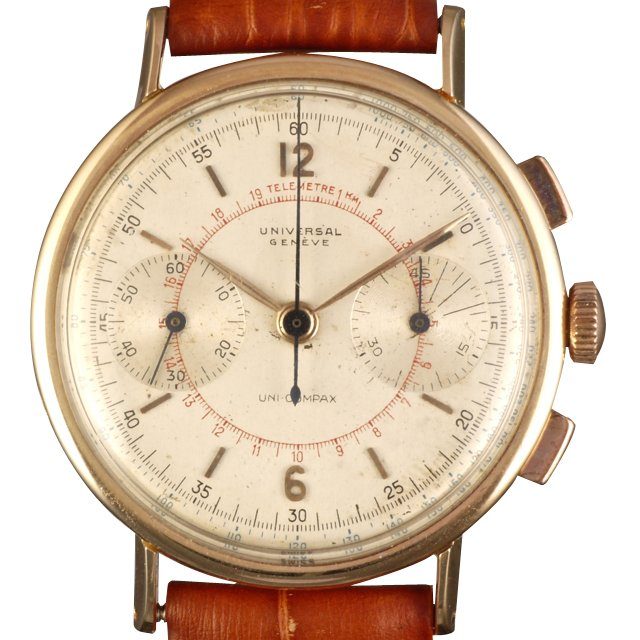
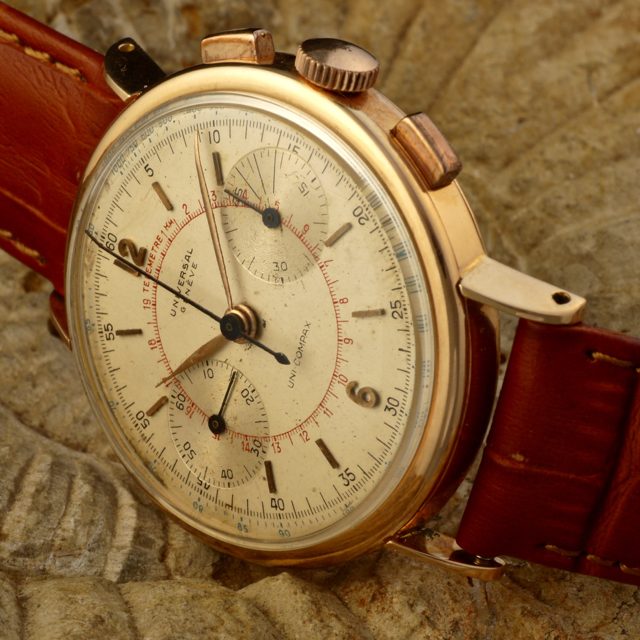
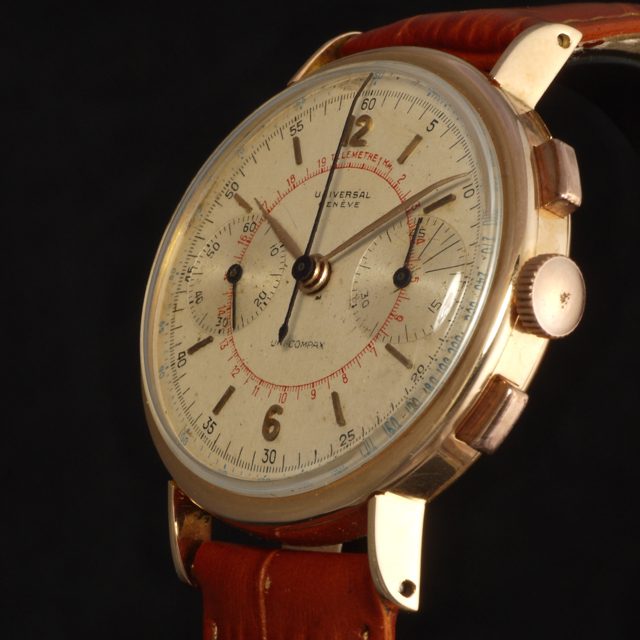
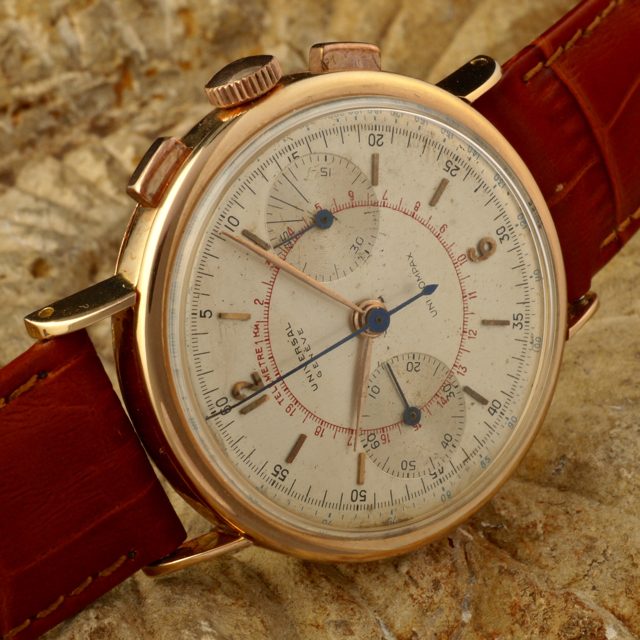
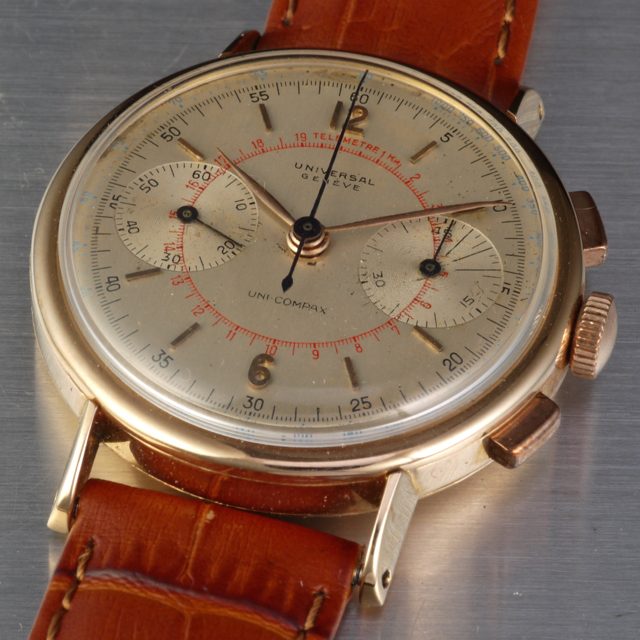
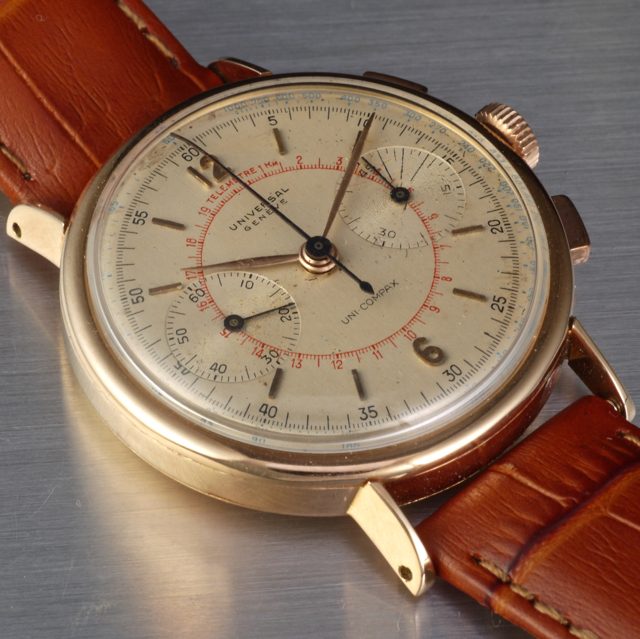
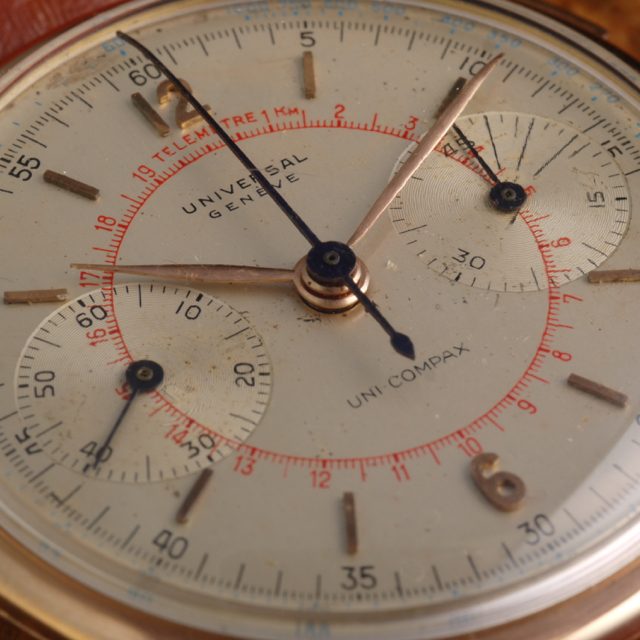
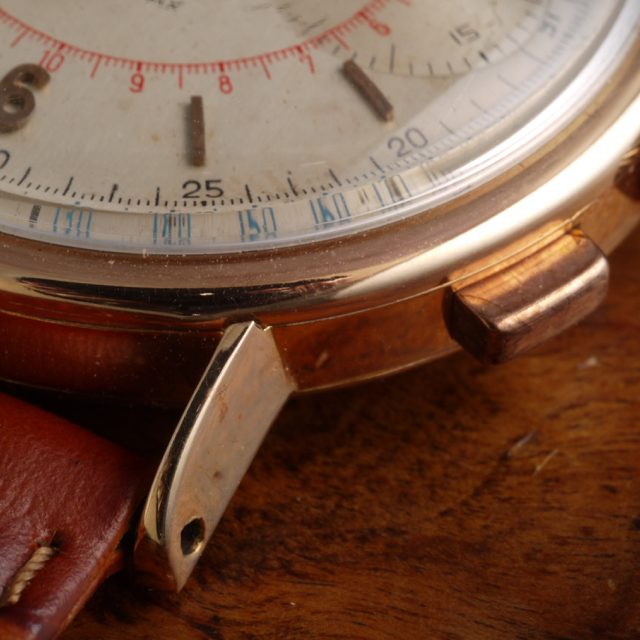
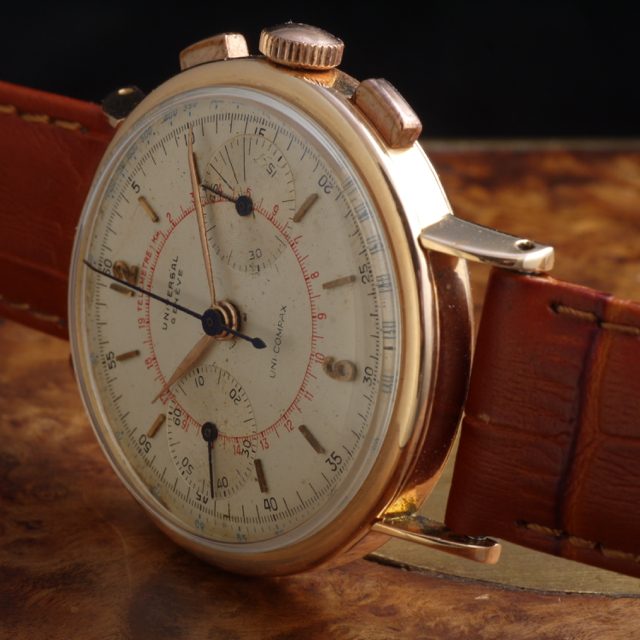
Universal Uni-Compax
John Bardeen, Walter H. Brattain, and William B. Shockley (US) develop the transistor1947 Universal Uni-Compax ref. 12546, 36.3mm gold case. Tachy-telemeter dial and 30 minute counter with 3 minutes indexes for calculating telephone charges, at time billed in 3 minute intervals.
A tachymeter scale measures how fast an object is moving. The scale can be found either on the dial or in the bezel. Most tachymeters start at 400 and end at 60, but some models can show different numbers. A telemeter scale measures the distance between the user of the watch and the event seen and heard. It was used extensively to calculate when artillery fired. When you saw the light made by the shot of the artillery, you would push the start button and push the stop button when the thunder was heard. The number shown in the scale refers to the distance.
From the mid-1940s until the late 1960s, the most beautiful timeless and iconic Chronographs were created. These watches still feel contemporary and fashionable today.
Founded in 1894 Universal watches are highly disputed among collectors especially for their classic chronographs.
Shortly before the beginning of World War II Universal seized an opportunity to create two wristwatch models: the Compur (in 1933) and the Aero-Compax (in 1936).
In 1941 Universal inaugurates a new ultra-modern production site, built within less than six months to make the new Aero-Compax chronometer for pilot’s along with other chronometer models, three years later the Universal Tri-Compax was introduced at Basel Watch Fair for the company’s 50th anniversary.
Universal also collaborated with the French fashion brand Hermes and designed a series of chronographs named Pour Hermes. Incidentally, Hermes was responsible for being the major sales hub for Universal in Europe until the 1950s. Twenty years later, the company was one of the few to introduce the quartz movement, which led to automatic watches.
The most notable changes occurred to the 60’s Compax, with the use of a water-resistant-type case with screw back cases, as opposed to the early models with snap on case backs. These water-resistant cases had round pushers (early models had square-shaped pushers).
